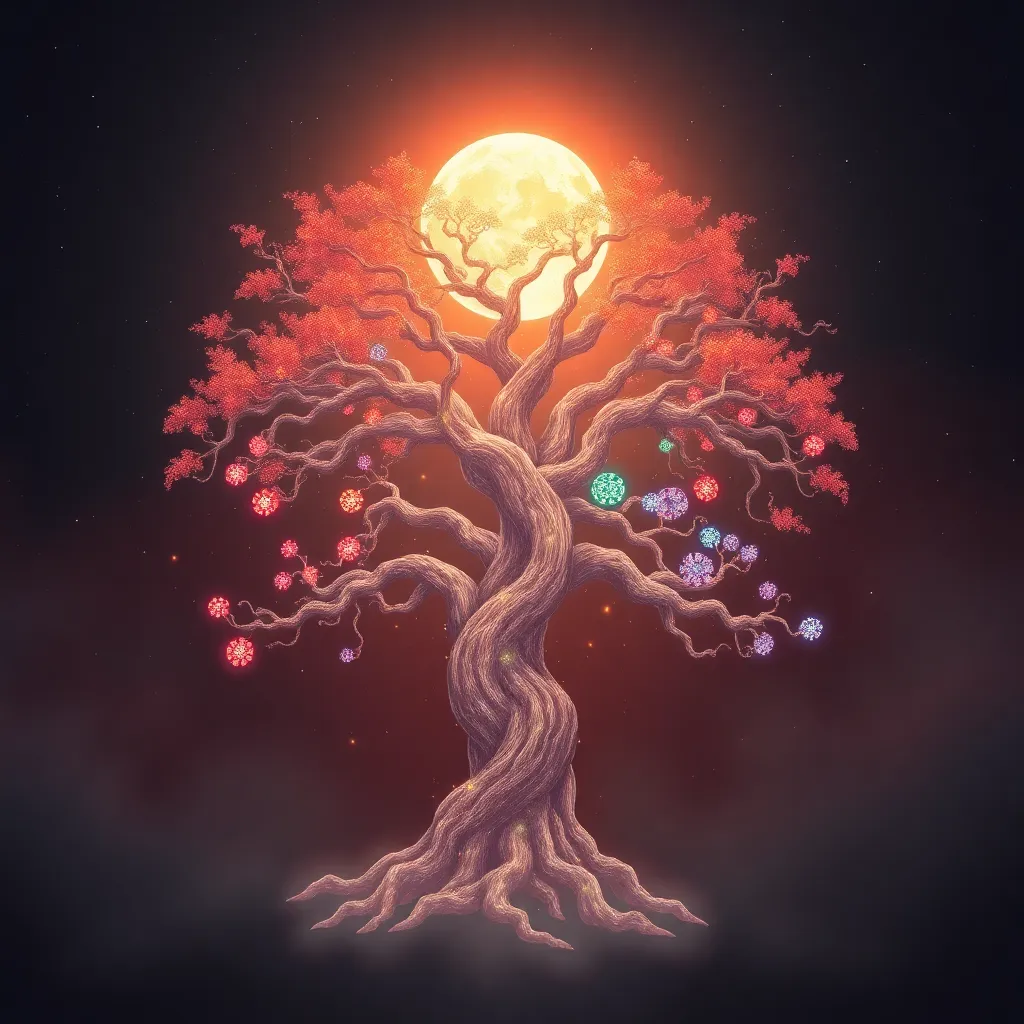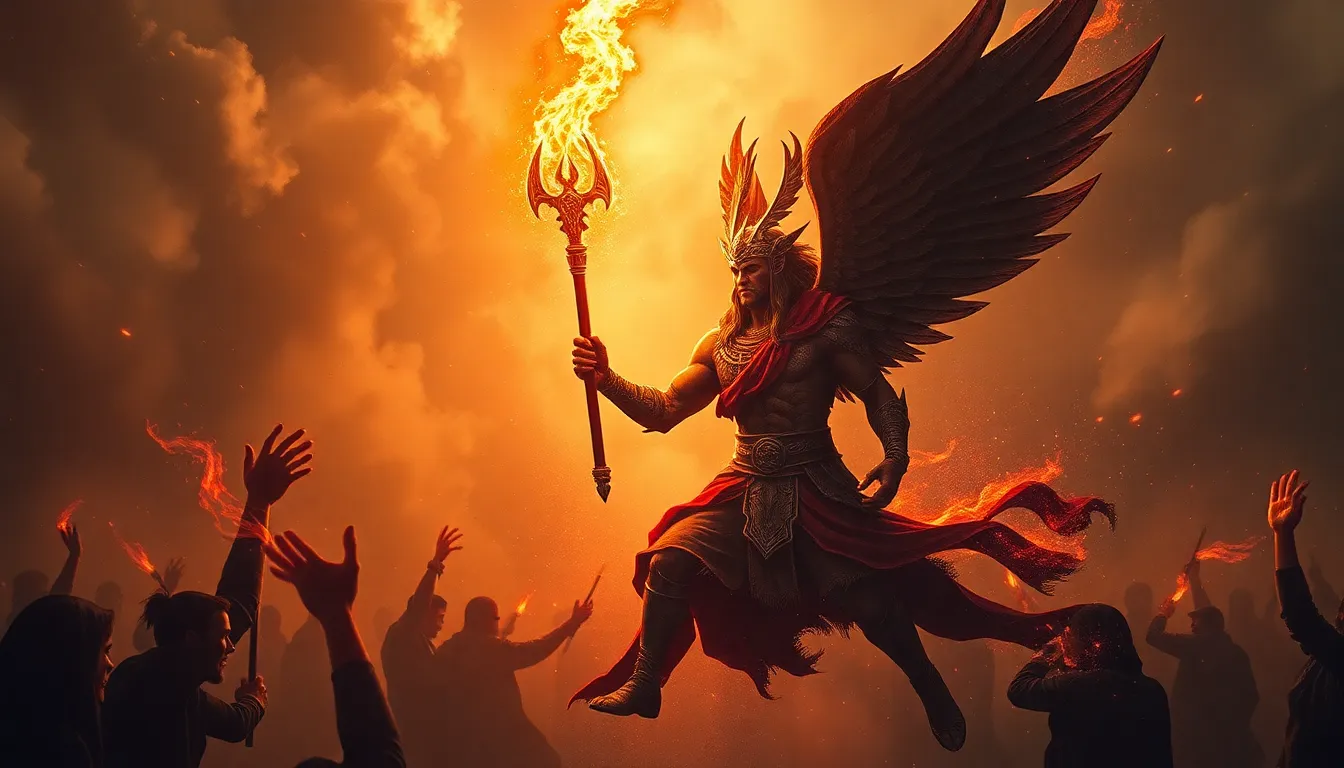The Avian Embodiments of the Divine: Messengers of the Supernatural in Thai Folklore
In the vibrant tapestry of Thai folklore, birds take on a profound significance, often serving as messengers and embodiments of the divine. They are more than just feathered creatures; they are symbolic representations of the interconnectedness between the human and supernatural realms. These mythical birds, woven into the fabric of Thai mythology, carry messages from the gods, guide lost souls, and embody cherished virtues. Their presence in legends, art, and religious practices speaks to the enduring power of these avian figures in Thai culture.
Garuda, the King of Birds: Guardian of the Heavens and Protector of the Dharma
Among the most prominent mythical birds in Thai folklore is Garuda, the king of birds and a powerful deity in both Hindu and Buddhist mythology. Often depicted as a magnificent bird with a human-like face, Garuda is a symbol of strength, courage, and protection. His role as a guardian of the heavens and a protector of the Dharma, the righteous path, makes him a revered figure in Thai Buddhism. Garuda's legend is intricately woven into the narrative of the Ramayana, a Hindu epic that is also deeply ingrained in Thai culture. In this epic, Garuda is the sworn enemy of the Nagas, serpent deities, and his eternal battle against them represents the struggle between good and evil.
Kinnarees: Beguiling Bird-Women, Harmonies of Nature and the Supernatural
The Kinnarees, ethereal bird-women, are another captivating element of Thai mythology. They are half-bird, half-human, combining the beauty and grace of women with the freedom and flight of birds. These enchanting beings are often depicted with golden wings and are said to possess melodious voices that can captivate even the most hardened hearts. Kinnarees are associated with music, dance, and the harmony of nature. They are often seen as messengers of the gods, bringing joy and inspiration to the human world. Their presence in Thai folklore reflects the intricate relationship between the natural and supernatural realms, highlighting the beauty and wonder that can be found at the intersection of these two worlds.
Hong: The Scarlet Kingfisher, Symbol of Love, Loyalty, and the Cycle of Life
The Hong, or the Scarlet Kingfisher, is a small but significant bird in Thai folklore. Unlike the mythical Garuda and Kinnarees, this bird is based on a real species, the common kingfisher. The Hong, however, is imbued with symbolic meaning, representing love, loyalty, and the cycle of life. Its vibrant red plumage symbolizes passion and devotion, while its connection to water signifies renewal and rebirth. The Hong’s nesting habits, where the male bird diligently cares for the nest and chicks while the female seeks food, embody the virtues of family and commitment. The Hong’s story is often used to teach valuable lessons about love, caring for one another, and the interconnectedness of life.
The Significance of Bird Symbolism in Thai Religious Practice
The mythical birds of Thai folklore are not merely legends; they are deeply embedded in Thai religious practice. The Garuda, for instance, is often depicted in Buddhist temples, acting as a protector of the sacred space and a symbol of the Dharma. The Kinnarees are frequently featured in traditional Thai music and dance, their enchanting voices invoking a sense of spiritual connection and harmony. The Hong is often portrayed in art and literature, its symbolism woven into stories and teachings. These mythical birds serve as reminders of the spiritual dimensions of life, offering guidance and inspiration to those who seek them.
Birds as Conduits between the Human and Divine Realms: Bridging the Gap
The mythical birds of Thai folklore act as powerful conduits between the human and divine realms. They bridge the gap between the earthly and the celestial, carrying messages from the gods and delivering guidance to those in need. The Garuda’s soaring flight, the Kinnarees’ haunting melodies, and the Hong’s vibrant presence all symbolize the connection between the human and the divine. These birds remind us that the spiritual world is not separate from our own, but rather interwoven into the fabric of our lives.
The Significance of Bird Symbolism in Thai Religious Practice
The mythical birds of Thai folklore are not merely legends; they are deeply embedded in Thai religious practice. The Garuda, for instance, is often depicted in Buddhist temples, acting as a protector of the sacred space and a symbol of the Dharma. The Kinnarees are frequently featured in traditional Thai music and dance, their enchanting voices invoking a sense of spiritual connection and harmony. The Hong is often portrayed in art and literature, its symbolism woven into stories and teachings. These mythical birds serve as reminders of the spiritual dimensions of life, offering guidance and inspiration to those who seek them.
The Garuda, with his powerful presence, is often seen as a guardian against evil spirits and other negative forces. His image is used in temple architecture, adornments, and even as a motif in Buddhist chanting, symbolizing strength and protection. The Kinnarees, with their celestial beauty and enchanting music, are often associated with rituals, ceremonies, and festivals. Their presence is seen as a way to invite divine blessings and to enhance the spiritual atmosphere of the occasion. The Hong, with its vibrant red plumage and symbolic significance, is often featured in Thai Buddhist teachings, representing love, loyalty, and the importance of family.
In Thai Buddhism, the emphasis on the interconnectedness of all things is reflected in these bird symbols. The Garuda embodies the protection of the Dharma, the Kinnarees symbolize the harmony and beauty of the natural world, and the Hong represents the cycle of life and the importance of family. Thai religious practices are woven with these symbols, offering a rich tapestry of spiritual meaning and cultural significance.
Birds as Conduits between the Human and Divine Realms: Bridging the Gap
The mythical birds of Thai folklore act as powerful conduits between the human and divine realms. They bridge the gap between the earthly and the celestial, carrying messages from the gods and delivering guidance to those in need. The Garuda’s soaring flight, the Kinnarees’ haunting melodies, and the Hong’s vibrant presence all symbolize the connection between the human and the divine. These birds remind us that the spiritual world is not separate from our own, but rather interwoven into the fabric of our lives.
The Garuda, as a messenger of the gods, often appears in stories and legends to deliver important messages or to offer assistance to those in need. His presence signifies divine intervention and offers hope and protection. The Kinnarees, with their ability to communicate with both the human and divine realms, act as intermediaries between the two worlds, conveying messages from the gods or offering insights and guidance. The Hong, with its connection to the natural world and the cycle of life, can be seen as a symbol of renewal and rebirth, offering hope and guidance to those facing challenges.
Through these bird symbols, Thai folklore reinforces the belief in a spiritual dimension that is intertwined with the human experience. These mythical birds are not merely fanciful creatures but powerful symbols that offer guidance, wisdom, and a sense of connection to a larger reality.
The Influence of Buddhist and Hindu Mythology on Thai Avian Folklore
Thai avian folklore is a rich tapestry woven from the threads of Buddhist and Hindu mythology. The influence of these two religious traditions is clearly visible in the characters, stories, and symbolism associated with the mythical birds.
The Garuda, a prominent figure in Thai folklore, is a powerful deity in both Hindu and Buddhist mythology. His role as the king of birds, guardian of the heavens, and protector of the Dharma is deeply embedded in both traditions. The Garuda's story, as narrated in the Hindu epic Ramayana, is also deeply ingrained in Thai culture, highlighting his eternal battle against the Nagas, serpent deities, representing the struggle between good and evil.
The Kinnarees, with their captivating presence and melodious voices, are believed to have originated from Hindu mythology. Their association with music, dance, and the harmony of nature is closely linked to the concept of celestial music and the divine arts found in both Hindu and Buddhist traditions. The Hong, while based on a real species, has acquired symbolic meaning in Thai culture, symbolizing love, loyalty, and the cycle of life – themes that resonate with both Buddhist and Hindu teachings.
The influence of these traditions is evident in the rich symbolism and narrative complexity of Thai avian folklore. These mythical birds are not just creatures of legend but embody the values, beliefs, and teachings of both Buddhist and Hindu traditions, making them significant cultural icons in Thai society.
The Role of Birds in Thai Art and Literature: Reflecting the Cultural Landscape
The mythical birds of Thai folklore have found a prominent place in Thai art and literature, enriching the cultural landscape with their symbolism and narratives. The Garuda, with his majestic presence, is often depicted in temple architecture, sculptures, and paintings, serving as a powerful visual symbol of strength, protection, and the Dharma.
The Kinnarees, with their enchanting beauty and melodious voices, often grace Thai literature and music, captivating audiences with their stories and songs. Their ethereal presence evokes a sense of wonder, mystery, and harmony, enriching the artistic landscape with their celestial beauty. The Hong, with its vibrant red plumage and symbolic meaning, is often portrayed in Thai art and literature, representing love, loyalty, and the cycle of life. It can be seen in traditional paintings, carvings, and even in contemporary art, reflecting the enduring appeal of this bird symbol.
These mythical avian figures are not just visual elements; they are integral parts of Thai artistic expression, reflecting the themes, values, and beliefs cherished by Thai society. The presence of these mythical birds in art and literature serves as a testament to their cultural significance and their enduring influence on the Thai cultural landscape.
The Enduring Power of Mythical Birds: Exploring the Contemporary Relevance of Ancient Beliefs
The mythical birds of Thai folklore, once confined to stories and legends, continue to resonate with contemporary Thai society. Their enduring power speaks to the timeless aspects of human nature and the enduring appeal of ancient beliefs.
The Garuda, as a symbol of strength, courage, and protection, continues to inspire people in the face of challenges. His presence offers a sense of security and hope, reminding people of the power of good over evil. The Kinnarees, with their enchanting music, continue to inspire artists and musicians, reminding them of the power of art to uplift, inspire, and bring harmony. The Hong, with its symbolism of love, loyalty, and the cycle of life, continues to resonate with contemporary audiences, emphasizing the importance of family, relationships, and the interconnectedness of all things.
The enduring relevance of these mythical birds lies in their ability to speak to the universal themes and experiences that transcend time and culture. They offer a sense of wonder, hope, and guidance, reminding people of the beauty and power of the human spirit. The stories and symbolism associated with these birds continue to inspire and shape contemporary Thai society, demonstrating the enduring power of ancient beliefs.
FAQ
What are the most important mythical birds in Thai folklore?
Three prominent mythical birds in Thai folklore are Garuda, Kinnarees, and Hong. Each bird holds a unique symbolism and plays a distinct role in Thai mythology, religious practice, and culture.
What is the significance of Garuda in Thai folklore?
Garuda is a powerful deity, often depicted as a magnificent bird with a human-like face. He is a symbol of strength, courage, and protection, serving as a guardian of the heavens and a protector of the Dharma. His presence is often seen in Buddhist temples, acting as a protector of the sacred space.
What is the significance of Kinnarees in Thai folklore?
Kinnarees are ethereal bird-women, captivating beings combining the beauty and grace of women with the freedom and flight of birds. They are often depicted with golden wings and are said to possess melodious voices. Kinnarees are associated with music, dance, and the harmony of nature, frequently featured in traditional Thai music and dance.
What is the significance of Hong in Thai folklore?
The Hong, or the Scarlet Kingfisher, represents love, loyalty, and the cycle of life. Its vibrant red plumage symbolizes passion and devotion, while its connection to water signifies renewal and rebirth. The Hong’s story is often used to teach valuable lessons about love, caring for one another, and the interconnectedness of life.



